The mesmerizing Tiger Snake, scientifically known as Notechis scutatus, is a native inhabitant of the Australian continent. Revered for its unique appearance, potent venom, and extraordinary adaptability, this serpent has earned its place as one of the country’s most intriguing reptilian wonders. With its distinct patterns and elusive nature, the Tiger Snake continues to captivate both researchers and nature enthusiasts alike.






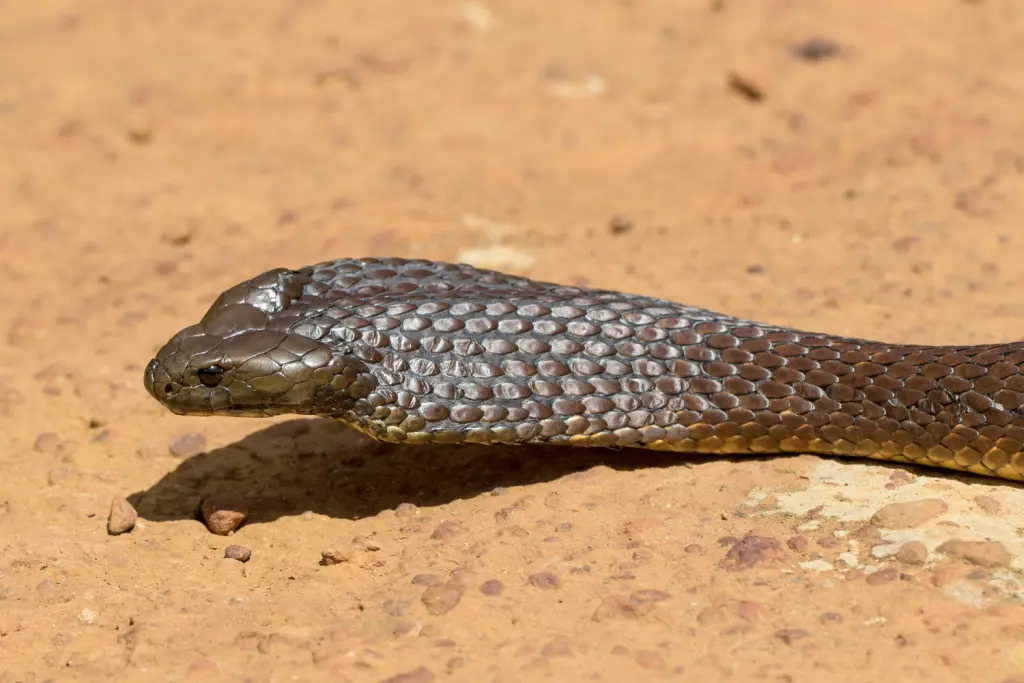
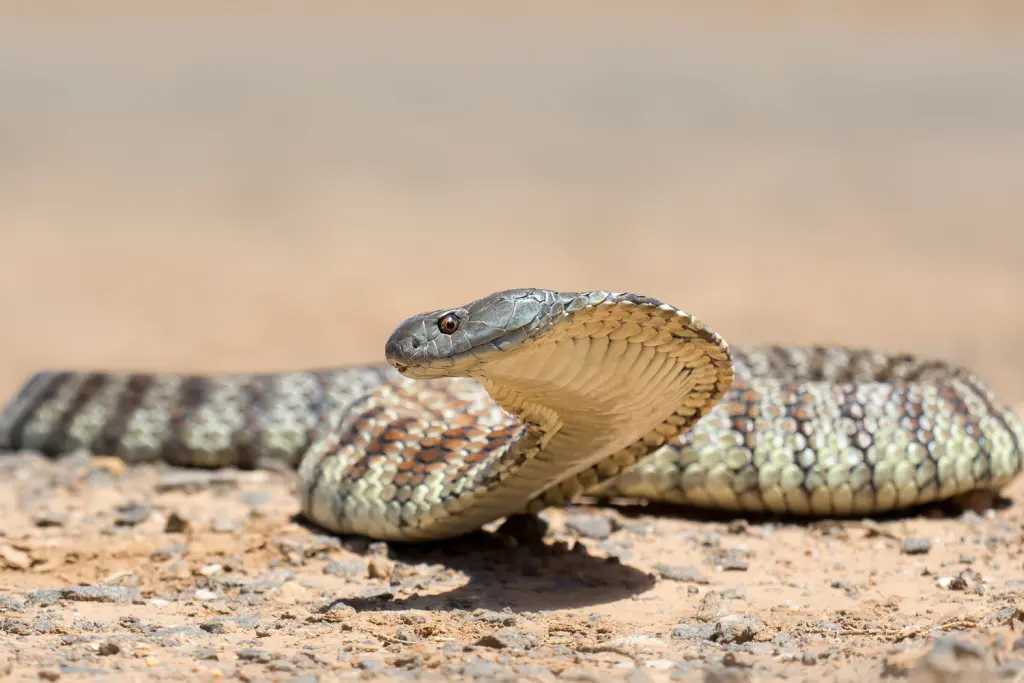






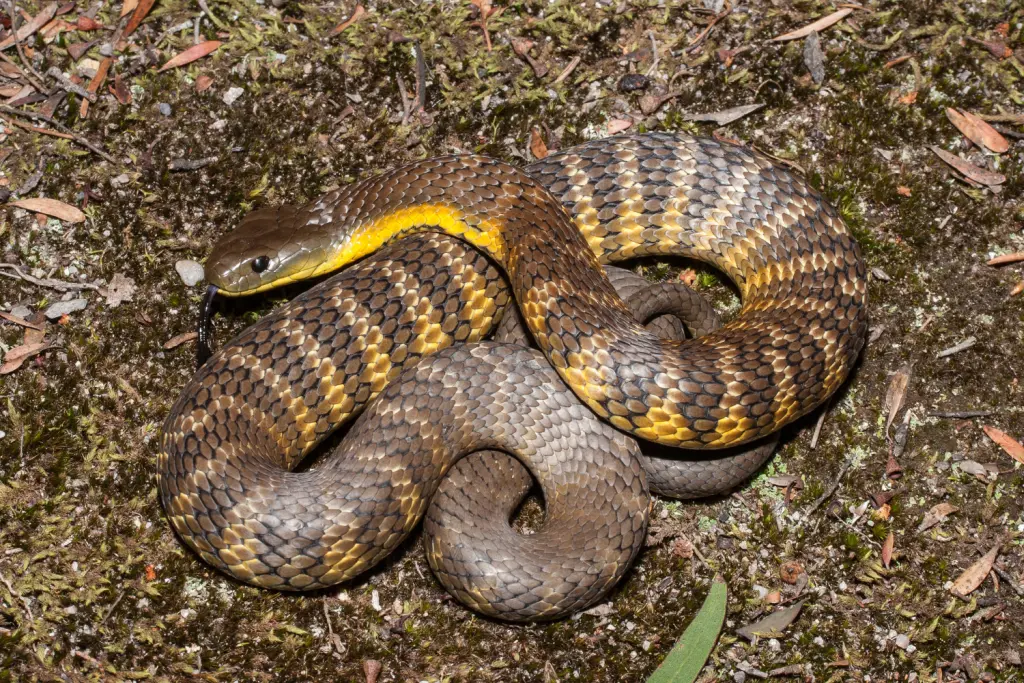




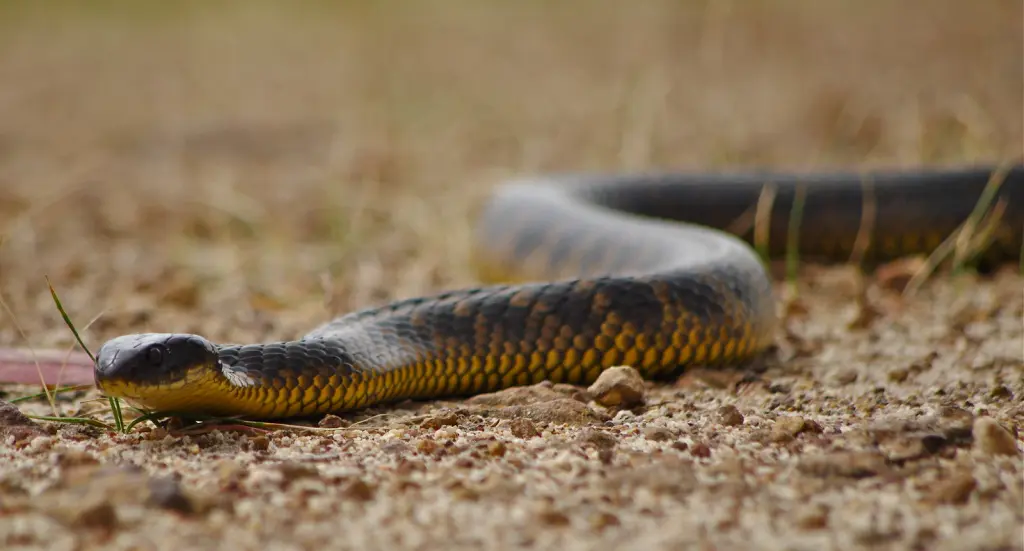


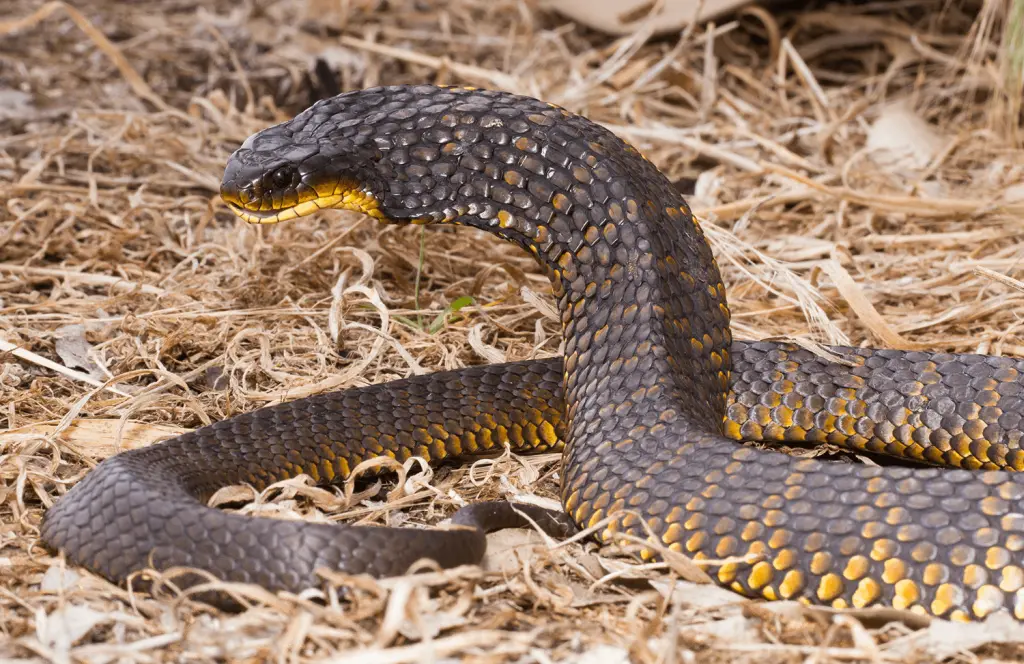
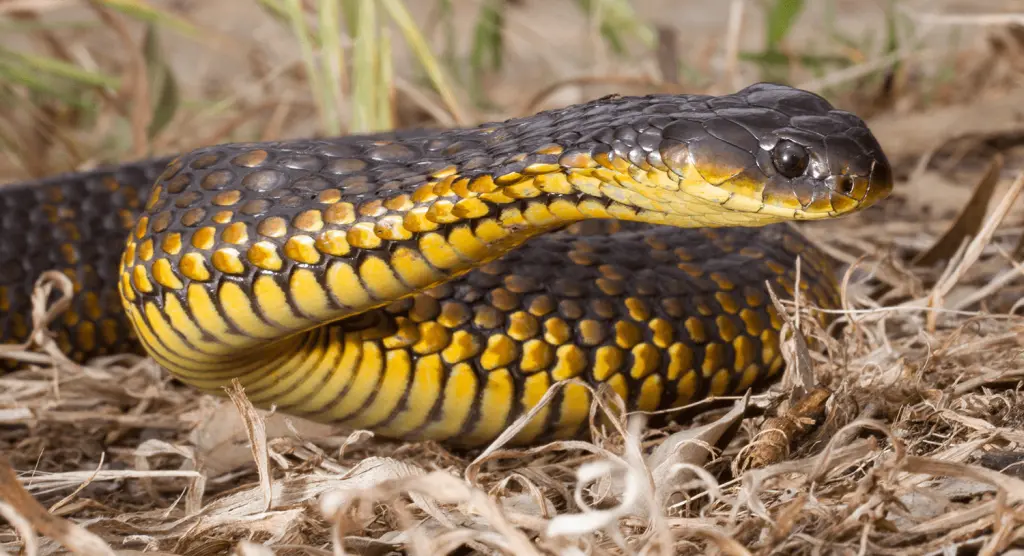





Appearance and Identification
The Tiger Snake derives its name from the remarkable striping and blotching patterns that adorn its body, reminiscent of a tiger’s coat. These striking markings vary in color and intensity, ranging from olive, yellow, and brown to black. Such variations in appearance make each individual Tiger Snake a visually distinctive creature, adding to its allure. Typically, adults can measure between 1.2 to 1.8 meters (4 to 6 feet) in length, although some specimens have been known to exceed this size.
Habitat and Distribution
Tiger Snakes are highly adaptable and can be found in a wide range of habitats across southern Australia. From coastal regions and wetlands to woodlands and grasslands, these serpents have a remarkable ability to thrive in diverse environments. Their adaptability has allowed them to colonize areas that were previously uninhabitable, proving their resilience and flexibility as a species.
Diet and Predatory Behavior
As carnivorous reptiles, Tiger Snakes primarily feed on small mammals, birds, reptiles, and amphibians. Equipped with sharp fangs and potent venom, they are highly efficient hunters. Their venom contains a cocktail of toxins that affects the nervous system and blood clotting, effectively immobilizing their prey. Once a Tiger Snake has successfully captured its target, it will swiftly consume the meal whole, aided by its remarkable ability to dislocate its jaws.
Behavior and Defense Mechanisms
Tiger Snakes are typically solitary and prefer to remain hidden, blending into their surroundings. Despite their secretive nature, they can become quite aggressive when threatened or cornered. When confronted, they will flatten their bodies, hiss loudly, and strike with lightning speed, making them a formidable adversary. It is important to exercise caution and respect when encountering these snakes to prevent any harm to both humans and the snakes themselves.
Reproduction and Life Cycle
Breeding for Tiger Snakes occurs during spring, when males compete for the attention of females. After a successful courtship, the female will give birth to live young, typically between 20 to 40 offspring. Unlike some reptiles, Tiger Snakes do not lay eggs. Instead, the females retain the eggs inside their bodies until the young are ready to be born. This unique reproductive strategy ensures the survival of the offspring, allowing them to enter the world fully equipped for survival.
Ecological Significance
Tiger Snakes play a crucial role in maintaining ecosystem balance in their respective habitats. As both predator and prey, they contribute to the intricate web of life, regulating populations of their prey species while being a source of nourishment for larger predators. Their presence in wetlands, for instance, helps control populations of frogs and small fish, ensuring the health and diversity of these delicate ecosystems.
Final Thought
The Tiger Snake’s enigmatic presence in the Australian landscape is a testament to the incredible diversity of the country’s wildlife. With its striking appearance, adaptable nature, and unique life cycle, this reptile remains an object of fascination and intrigue. While Tiger Snakes may evoke caution and respect, they are also a symbol of the delicate balance of nature and the interconnectedness of all living organisms. As we continue to study and appreciate these remarkable creatures, we deepen our understanding of the natural world and the wonders it holds.








